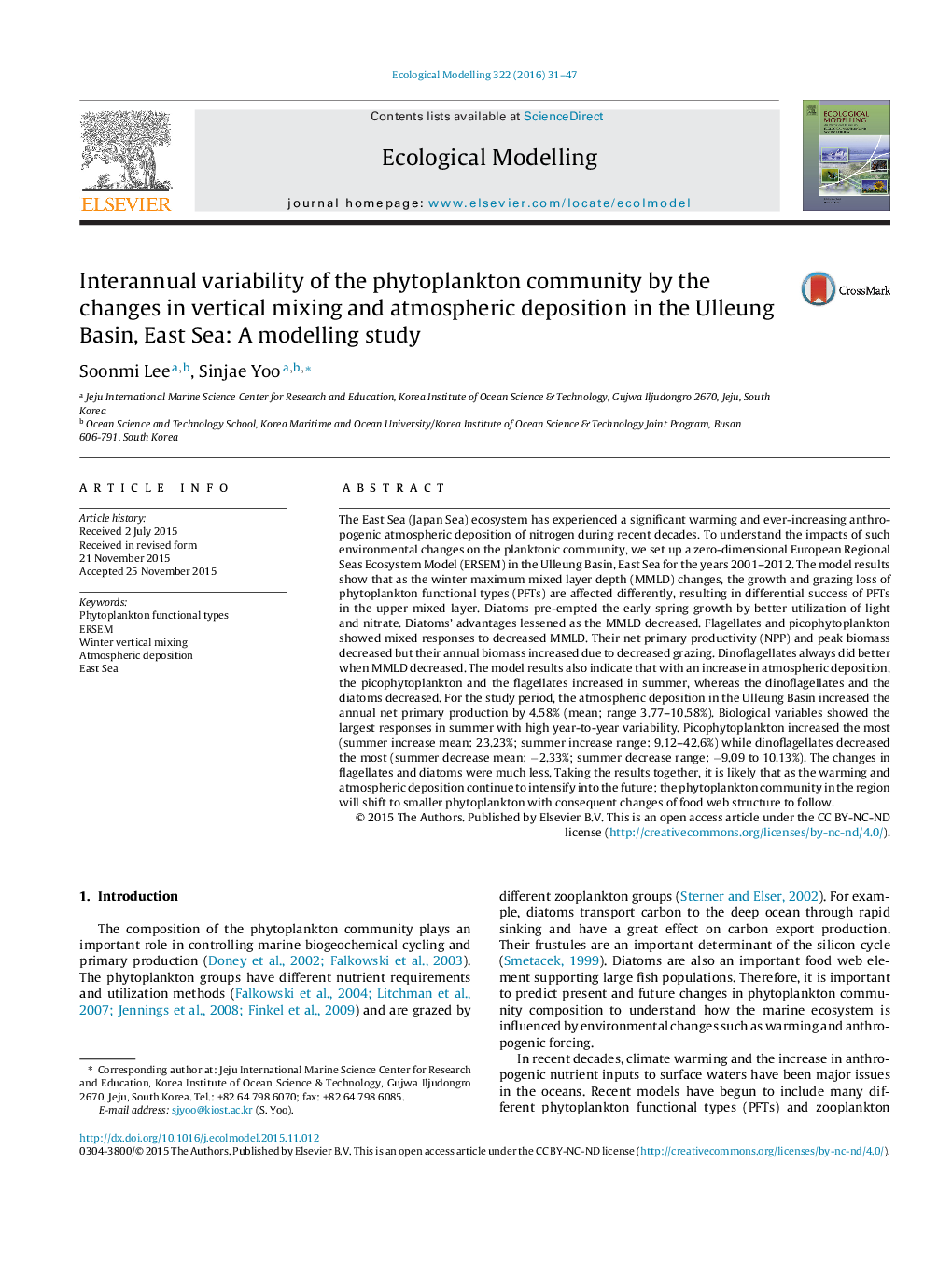| Article ID | Journal | Published Year | Pages | File Type |
|---|---|---|---|---|
| 6296218 | Ecological Modelling | 2016 | 17 Pages |
Abstract
The East Sea (Japan Sea) ecosystem has experienced a significant warming and ever-increasing anthropogenic atmospheric deposition of nitrogen during recent decades. To understand the impacts of such environmental changes on the planktonic community, we set up a zero-dimensional European Regional Seas Ecosystem Model (ERSEM) in the Ulleung Basin, East Sea for the years 2001-2012. The model results show that as the winter maximum mixed layer depth (MMLD) changes, the growth and grazing loss of phytoplankton functional types (PFTs) are affected differently, resulting in differential success of PFTs in the upper mixed layer. Diatoms pre-empted the early spring growth by better utilization of light and nitrate. Diatoms' advantages lessened as the MMLD decreased. Flagellates and picophytoplankton showed mixed responses to decreased MMLD. Their net primary productivity (NPP) and peak biomass decreased but their annual biomass increased due to decreased grazing. Dinoflagellates always did better when MMLD decreased. The model results also indicate that with an increase in atmospheric deposition, the picophytoplankton and the flagellates increased in summer, whereas the dinoflagellates and the diatoms decreased. For the study period, the atmospheric deposition in the Ulleung Basin increased the annual net primary production by 4.58% (mean; range 3.77-10.58%). Biological variables showed the largest responses in summer with high year-to-year variability. Picophytoplankton increased the most (summer increase mean: 23.23%; summer increase range: 9.12-42.6%) while dinoflagellates decreased the most (summer decrease mean: â2.33%; summer decrease range: â9.09 to 10.13%). The changes in flagellates and diatoms were much less. Taking the results together, it is likely that as the warming and atmospheric deposition continue to intensify into the future; the phytoplankton community in the region will shift to smaller phytoplankton with consequent changes of food web structure to follow.
Related Topics
Life Sciences
Agricultural and Biological Sciences
Ecology, Evolution, Behavior and Systematics
Authors
Soonmi Lee, Sinjae Yoo,
